Complete Solutions to LEVEL-1 of chapter ALKYL HALIDES (SUBSTITUTION REACTIONS) of Class 12 book with complete answers and questions
| Class 12 | CHEMISTRY |
| Chapter | ALKYL HALIDES (SUBSTITUTION REACTIONS) |
| MS CHOUHAN | LEVEL-1 |
| Number Of Questions | 90 |
| Academic Year | 2023-24 |
Which of the following is not expected to be intermediate of the following reaction ?
 03:01View Solution
03:01View Solution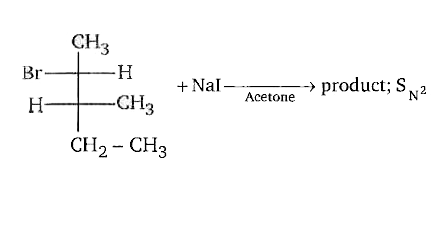 product of the reaction is : 02:06View Solution
product of the reaction is : 02:06View SolutionThe rate of `SN^2` will be negligible in
02:37View SolutionWhat is the major product obtained in the following reaction ?
 02:02View Solution
02:02View SolutionThe following is not an appropriate reaction for the preparation of t-butyl ethyl ether.
`C_(2)H_(5)ONa+CH_(3)-overset(CH_(3))overset("| ")underset(CH_(3))underset("| ")"C "-Cl rarr CH_(3)-overset(CH_(3))overset("| ")underset(CH_(3))underset("| ")"C "-OC_(2)H_(5)`
(i) What would be the major product of this reaction ?
(ii) Write a suitable reaction for the preparation of t-butylethyl ether.
02:45View SolutionWhich of the following expressions is representative of the rate law for a `S_(N^2)` reaction ?
02:29View Solution Major product of this reaction is :02:13View Solution
Major product of this reaction is :02:13View SolutionWhich of the following alkyl halide undergo rearrangement in `S_(N^1)` reaction ?
03:38View SolutionArrange the following three chlorides in decreasing order towards `S_(N^1)` reactivity.
 01:22View Solution
01:22View SolutionWhich one of the following undergoes nucleophilic aromatic substitution at the fastest rate ?
01:59View SolutionRank the following in order of decreasing rate of solvolysis with aqueous ethanol (fastest `rarr` slowest)
 03:06View Solution
03:06View SolutionThe reaction of 4-bromobenzyl chloride with sodium cyanide in ethanol leads to the formation of :
01:56View SolutionWhich of the following reactant will not favour nucleophilic substitution reaction ?
01:40View Solution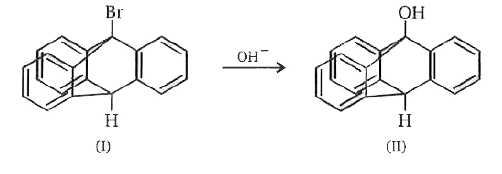 Conversion of I to II :02:53View Solution
Conversion of I to II :02:53View SolutionWhich is the correct reaction coordinate diagram for the following solvolysis reaction ?
 03:31View Solution
03:31View Solution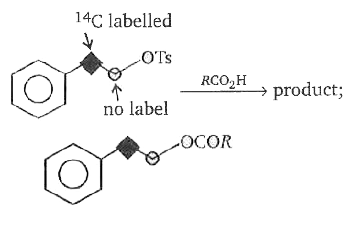 product, Product of this reaction is 04:56View Solution
product, Product of this reaction is 04:56View Solution Product (B) is :03:54View Solution
Product (B) is :03:54View SolutionWhich of the following represents the correct graph for `S_(N^2)` reaction ?
02:40View SolutionWhich of the following graph represents correct graph for `S_(N^1)` reaction :
05:24View SolutionWhich of the following is most reactive towards `SN^1` reaction
03:15View SolutionAmong the given pairs in which pair, first compound has higher boiling point than second ?
03:30View SolutionWhat is the major product of the following reaction ?
`CH_(3)-C -= N underset(Et_(2)O)overset(CH_(3)MgI)rarr overset(H_(3)O^(o+))rarr`02:27View Solution`S_(N^1)` and `S_(N^2)` products are same with (excluding stereoisomer):
08:40View SolutionConsider the nucleophilic attacks given below. Select in each pair that shows the greater `S_(N^2)` reaction rate.
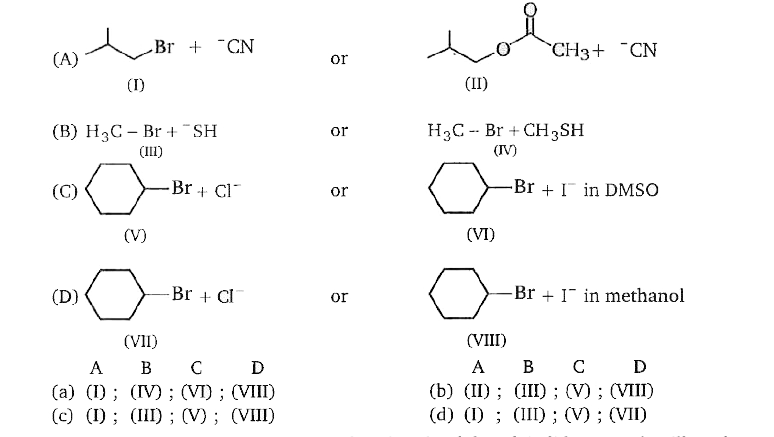 04:16View Solution
04:16View SolutionWhich of the two stereoisomers of 4-t-butylcyclohexyl iodide `(""^(127) I^(-))` will undergo `S_(N)^(2)` substitution with `""^(128)I^(-)` faster, and why?
 02:21View Solution
02:21View Solution(Z)-2-Butene reacts with `Br_(2)//H_(2)O`. The resulting bromohydrin when treated with methoxide in methanol undergoes an intramolecular`S_(N^2)` reaction. Taking into consideration the stereochemical consequences of the reaction mechanism involved, choose the final product(s) of these transformations.
 05:34View Solution
05:34View SolutionRank the following species in order of decreasing nucleophilicity in a polar protic solvent (most `rarr` least nucleophilic):
 01:30View Solution
01:30View SolutionIdentify products of the given reactions :
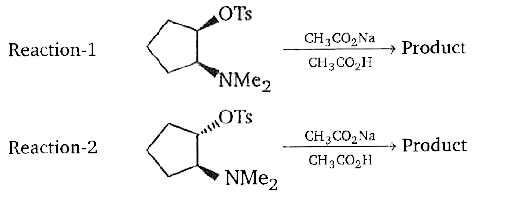 05:36View Solution
05:36View Solution
Which of the following is true about given graphs A and B ?02:06View SolutionIn each of the following groups, which is the strongest (best) nucleophile ?
 03:55View Solution
03:55View Solution 02:38View Solution
02:38View SolutionWhich of the following reaction is an elimination reaction ?
01:56View Solution
Which of the following products can be obtained from above reaction ?03:16View SolutionWhat is the principal product of the following reaction ?
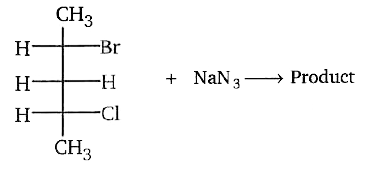 01:57View Solution
01:57View SolutionWhat would be the effect of increasing solvent polarity on the rate of each of the following reactions ?
(A) `Nu + R - L to overset(o+)Nu - R + L^(-)`
(B) `R - L^(o+) to R^(o+) + L`03:09View SolutionWhich one of the following is more reactive towards `S_N2` reaction?
01:29View Solution4-chloro-1-butanol + NaOH`rarr` (B)
Product (B) of the above reaction is :01:41View SolutionIn the given pairs of alkyl-halide, in which pair the first compound is more reactive than second compound toward `S_(N^2)` reaction ?
02:25View SolutionIn the given pair of compound, in which pair the second compoundis more reactive than first toward `S_(N^2)` reaction
03:20View SolutionIn which pair second ion is more stable than first?
 03:28View Solution
03:28View SolutionWhich is a true statement concerning the transition state of an `S_(N^2)` reaction ?
02:01View SolutionIncreasing the concentration of a nucleophile in a typical `S_(N^2)` reaction by a factor of 10 will cause the reaction rate to :
01:27View SolutionDecreasing the concentration of an electrophile in a typical `S_(N^2)` reaction by a factor of 3 will cause the reaction ratio to :
01:27View SolutionIncreasing the concentration of an electrophile in a typical `S_(N^2)` reaction by a factor of 3 and the concentration of the nucleophile by a factor of 3 will change the reaction rate to :
01:34View SolutionConsider the following reaction and select the best choice that represents the reaction.
 02:30View Solution
02:30View Solution 03:24View Solution
03:24View SolutionThe reaction,
 proceeds by the........... mechanism.02:20View Solution
proceeds by the........... mechanism.02:20View SolutionConsider the following anions.

When attached to sp -hybridized carbon, their leaving group ability in nucleophilic substitution reaction decreases in the order :02:00View Solution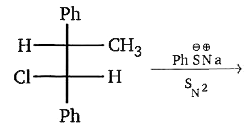 Principal organic product of the reaction will be :02:48View Solution
Principal organic product of the reaction will be :02:48View SolutionReaction of R-2-butanol with p-toluenesulphonyl chloride in pyridine followed by reaction with LiBr gives:
02:44View SolutionThe compound which undergoes SN_(1) reaction most rapidly is :
01:13View SolutionAddition of KI accelerates the hydrolysis of primary alkyl halides because :
02:01View SolutionWhich of the following phrases are not correctly associated with SN1 reaction ?
(1) Rearrangement is possible
(2) Rate is affected by polarity of solvent
(3) The strength of the nucleophile is important in determining rate
(4) The reactivity series is tertiary > secondary > primary
(5) Proceeds with complete inversion of configuration07:17View Solution 02:57View Solution
02:57View Solution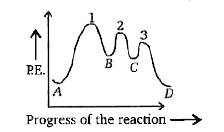 02:02View Solution
02:02View Solution 02:44View Solution
02:44View Solution
The product X is :02:59View SolutionRelative rate of reaction of the following amine with methyl iodide is:
 04:06View Solution
04:06View Solution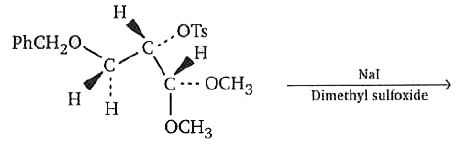 02:52View Solution
02:52View Solution 02:30View Solution
02:30View Solution 04:50View Solution
04:50View SolutionThe decreasing order of reactivity of the compounds given below towards solvolysis under identical conditions is :
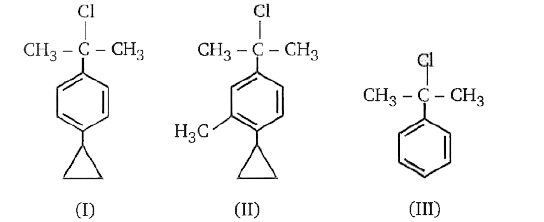 01:43View Solution
01:43View Solution 02:48View Solution
02:48View Solution(R)-2-octyl tosylate is solvolyzed in water under ideal SN1 conditions. The product(s) will be:
05:21View SolutionFrom each of the following pairs select the compound that will react faster with sodium iodide in acetone :
Pair-A: (1) 2-Chloropropane
(2) 2- Bromopropane
Pair-B: (3) 1 - Bromobutane
(4) 2- Bromobutane03:29View SolutionAmong the given halides, which one will give same product in both `S_(N^2)` and`S_(N^2)` reactions.
 04:39View Solution
04:39View SolutionProduct(s) formed during this reaction is/are :
 04:56View Solution
04:56View SolutionAnisole reflux with excess conc. HI to give Product
01:33View SolutionWhich of the following compounds would react faster with NaCN in an `SN^2`reaction ?
02:21View Solution`HC-= C Na + Cl - CH_2 - CH_2 - CH_2 - I to (A) ` Major product (A) is :
03:13View SolutionWhat is the major product obtained in the following reaction
 01:48View Solution
01:48View Solution 02:46View Solution
02:46View Solution`Me_(2)C=CH-CH_(2)-CH_(2)-Cloverset(H_2O)underset(CaCO_3)rarr` (X), Major product of the reaction is :
03:15View Solution 04:01View Solution
04:01View SolutionRelative rate of reaction with `H_(2)O`.
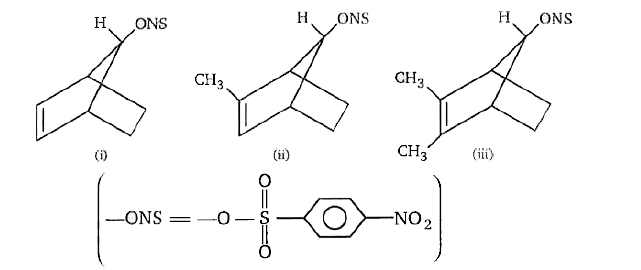 02:38View Solution
02:38View Solution 04:39View Solution
04:39View SolutionWhich of the following statements is correct regarding the rate of hydrolysis of the compounds (A) and (B) by `SN^1` reaction ?
 01:55View Solution
01:55View SolutionWhat are reactant X and product Y in the following sequence of reactions ?
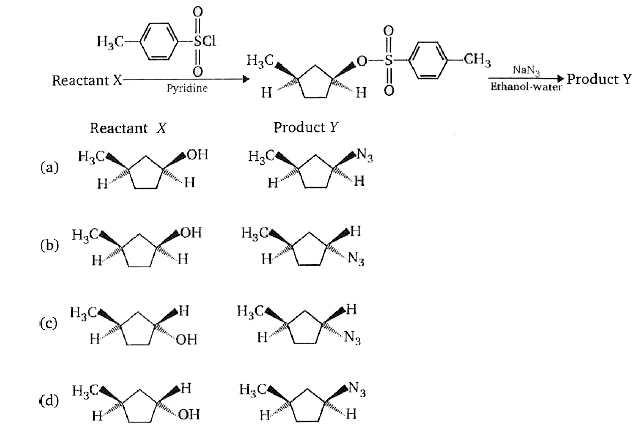 03:58View Solution
03:58View Solution 01:49View Solution
01:49View Solution`C_(6)H_(13)Br+OH^(-)rarrC_(6)H_(13)OH+Br^(-)` is an example of:
01:11View SolutionTransition state 2 is structurally most likely as :
 04:10View Solution
04:10View Solution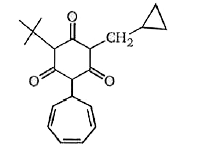 03:48View Solution
03:48View SolutionWhat is the stereochemical result of `S_(N)^(1)` and `S_(N) ^(2)` reactions ?
06:13View SolutionMost reactive halide towards `S_(N^1)` reaction is
02:47View Solution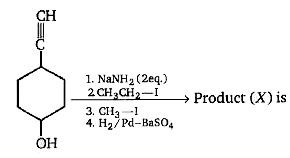 04:01View Solution
04:01View SolutionFollowing reaction is an example of :
 01:25View Solution
01:25View SolutionThe major product of the following reaction : :
 02:49View Solution
02:49View SolutionChoose the suitable option for the correct mechanism for the following reactions.
 01:14View Solution
01:14View Solution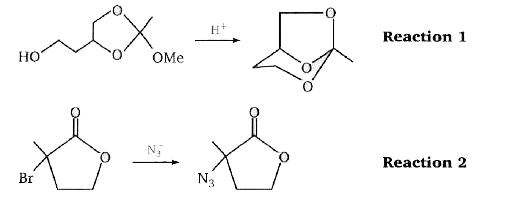
Type of mechanism followed by reaction 1 and 2 respectively .04:53View Solution 02:13View Solution
02:13View Solution
LEVEL-1 questions and complete solutions for chapter ALKYL HALIDES (SUBSTITUTION REACTIONS) of MS CHOUHAN of Class 12
